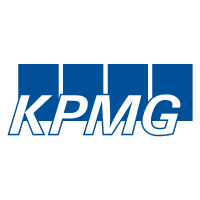7 ways to optimise your benefits offering
Over the past few years, inflation and economic uncertainty have overshadowed the subject of employee reward, with a substantial focus on pay increases and cost-of-living support.
But now that it appears the clouds are beginning to part and the economy is showing signs of recovery, we’re starting to see a pick-up in demand for talent.
With circa 900,000 vacancies in the UK, employers are focusing more than ever on investing in their benefit schemes to ensure that they play a key part in attracting and retaining the talent needed to be successful.
Rise of the employee-driven benefits strategy
A KPMG survey of 4,000 frontline workers showed that pay and benefits, followed by flexibility and convenience, are the top two attraction and retention drivers.
Employee expectations have changed; gone are the days when employers could just offer a standard benefits scheme, where each organisation’s package seemed identical to the next.
No longer are insurance-heavy packages and boilerplate discount platforms enough to engage the modern employee.
The pandemic brought flexibility to the forefront of the employee experience, from hybrid working, flexible shift arrangements and also tailored benefits packages.
Competitive pay is still a priority we’re seeing in the talent market, yet employees are also seeking benefits that cater to their individual lifestyles.
There is also a trend towards benefits that promote diversity and inclusion (e.g. flexibility, holidays, childcare etc) and ESG (e.g. ethical investment, electric cars etc) to meet the demands of diverse workforce and help open up as wide a talent pool as possible to employers.
However, a recent pulse study of reward and benefits professionals showed that cost is a critical factor for them this year, so simply throwing more money at benefits is not an option. This means it’s crucial for employers to be even more strategic with their benefit offerings.
7 ways to optimise your current benefits offering
When mulling over changes to benefits, it’s vital to maximise your return on investment and the employee experience by factoring in these key considerations:
- Review your current arrangements with your brokers and providers: Consider benefit providers or schemes that optimise the cost of current provisions. KPMG recently supported a business that decided to move from a reactive healthcare plan to a more proactive plan and managed to reduce premiums whilst improving employee take-up and staff wellness levels. Making these adjustments could also potentially reduce overall treatment claims.
- Consolidate benefits that may overlap: We often notice that healthcare plans already cover services that are also offered by another benefit included in the package; for example, some PMI plans include a virtual GP service so a standalone virtual GP benefit may no longer be required.
- Make the most of tax-efficient benefit schemes and options: Taking advantage of tax-efficient schemes can free up some budget for both employers and employees. For example, moving from a net pay pension arrangement to a salary sacrifice setup, implementing electric vehicle schemes, and cycle to work schemes.
- Don’t underestimate low cost or ‘free’ benefits: Some benefits like employee discount schemes can have little upfront cost to employers while also saving employees money, and some offerings like a social recognition programme can be a free way for employers to boost wellbeing and foster a positive employee experience.
- Use data to understand what benefits your employees value: Leverage your digital benefits platform to gather invaluable data such as which schemes are employees engaging with the most or which demographics are selecting which offerings. These insights can inform your benefits strategy to make sure you optimise your arrangements.
- Consider whether any new or innovative benefits could bolster your package: With PMI becoming increasingly expensive, there are other health benefits that could support the core PMI offering and could support avoiding steep premium increases. For example, adding a cost-efficient digital health assessment that can be done remotely – using PPG technology to measure heart rate and other vital signs, the technology uses generative AI algorithms to make recommendations and support preventative healthcare. Similarly, supplementing the PMI with a health care cash plan to manage overall claim excess levels or provide some form of cover to employees not eligible for PMI.
- Boost communication and accessibility to maximise uptake: Your benefits offering should be more than just something employees use once a year to renew and select their options. We’ve seen many employers enhance the flexibility of their benefits schemes by opening enrolment and selection year-round, utilising a robust benefits platform to serve as a reward hub that employees use on a regular basis to engage with everything the organisation has to offer. Set up in the right way, such a reward hub can notify employees about the latest benefits or make tailored, data-driven benefit recommendations based on an employee’s profile.
How will you enhance your benefits strategy?
The rise of flexibility in the benefits sphere means it’s the perfect time to transform your benefits strategy into something dynamic – something that can take advantage of emerging technologies and be shaped by your employees to craft an offering that’s innovative, cost effective and attractive to a wide talent pool.
That’s why now is the time to review your strategy and plan how to elevate your benefits offering to the next level.
Find out how we can support you with your benefits strategy and implementation in a KPMG way.
Supplied by REBA Associate Member, KPMG LLP
KPMG total reward and benefits solutions cover: Assessment, Design ,Compliance, Legal and Technology








